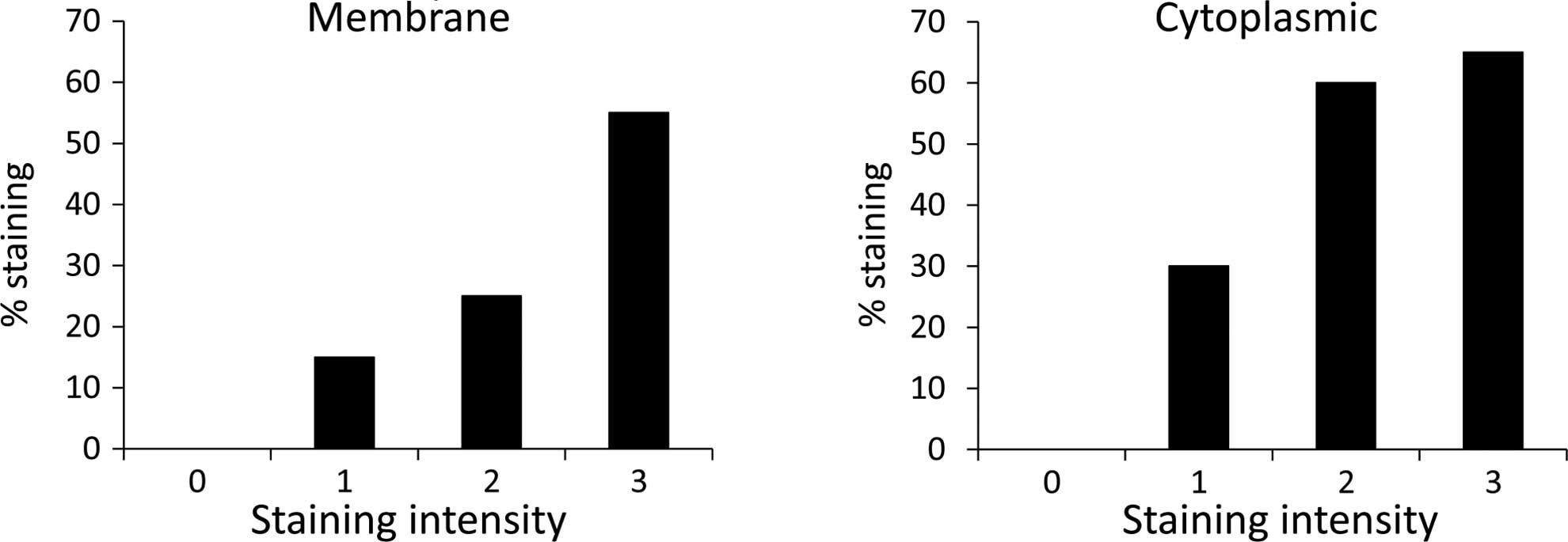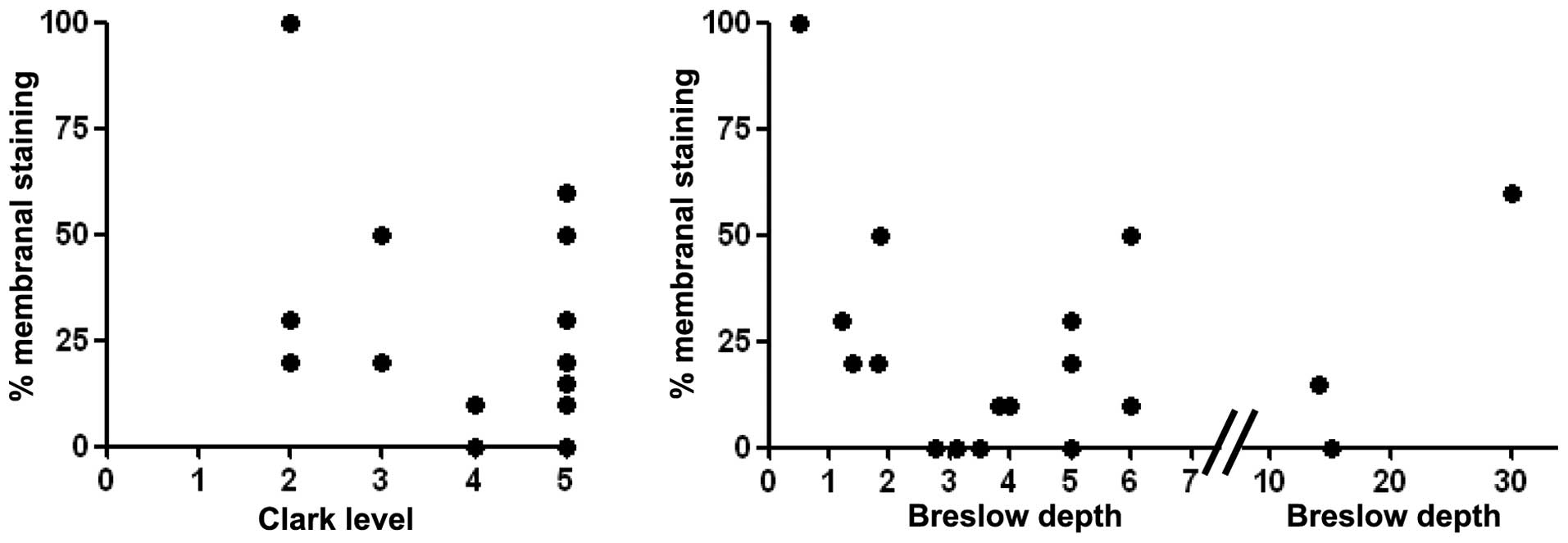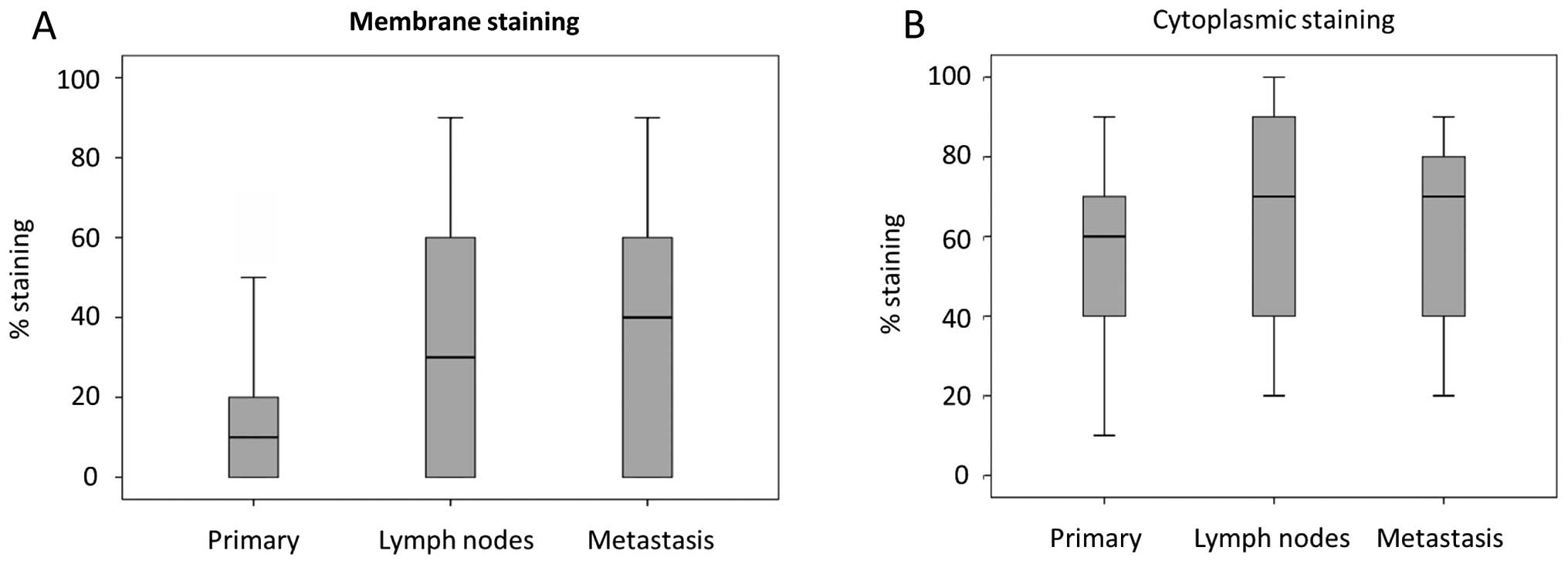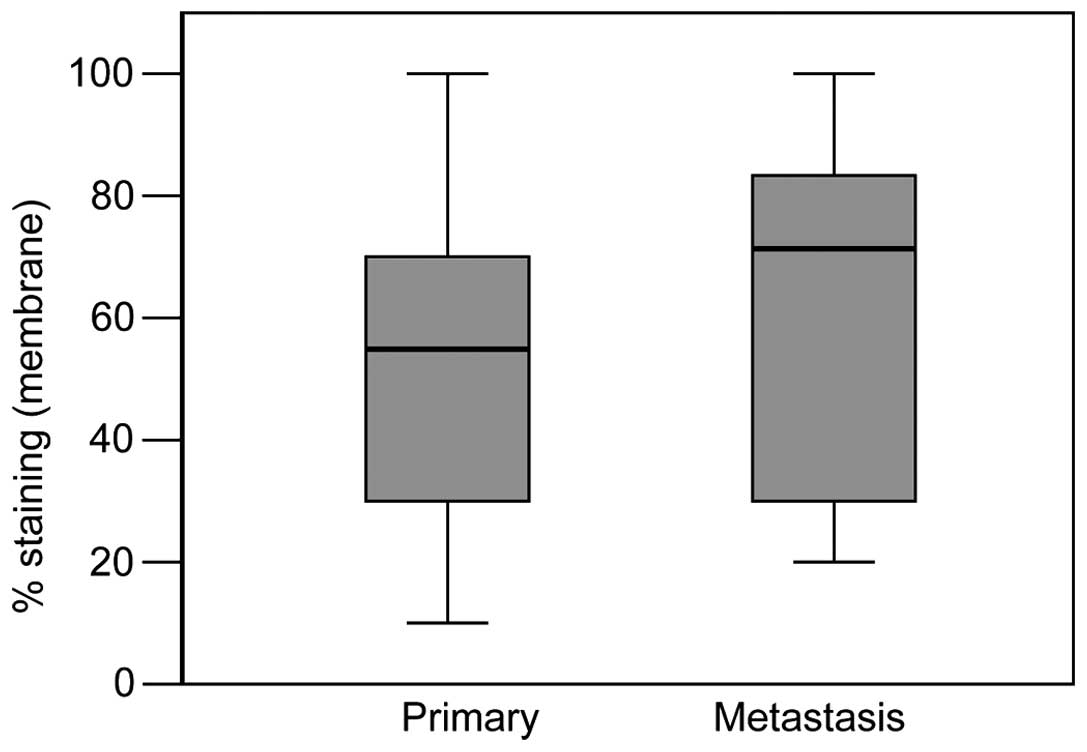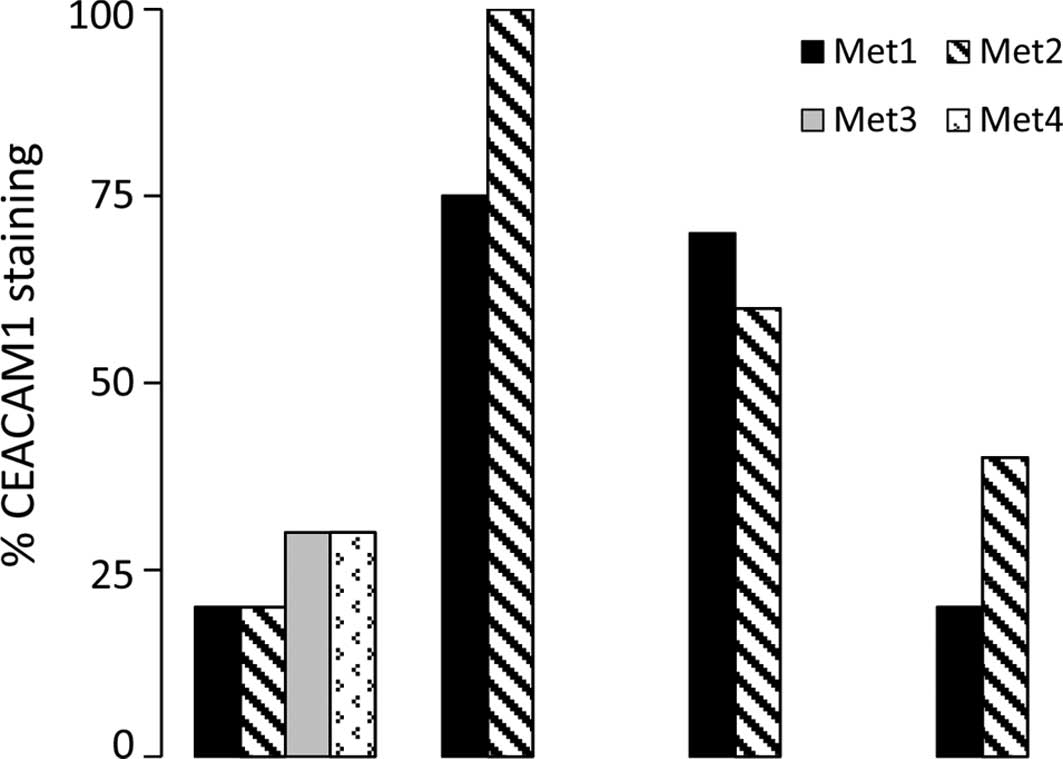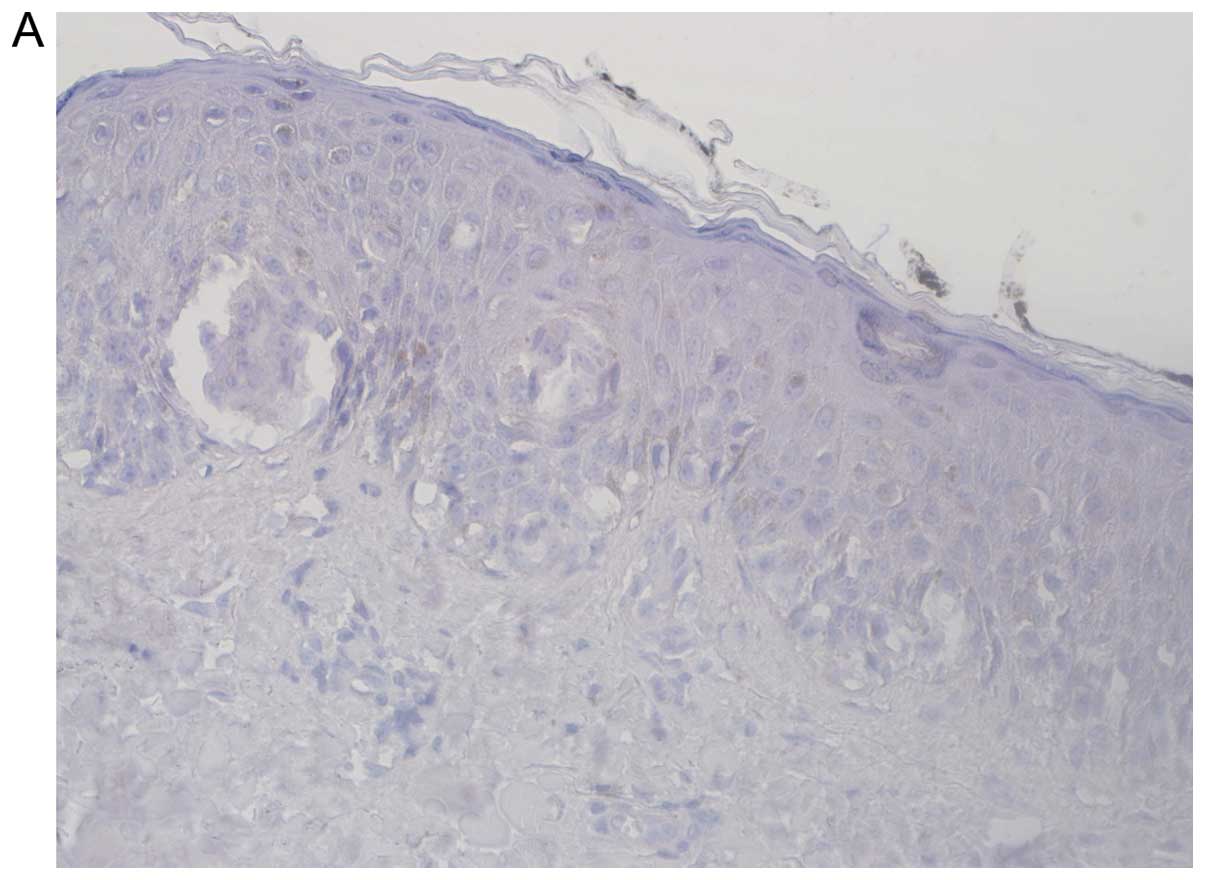|
1
|
Sapoznik S, Hammer O, Ortenberg R, et al:
Novel anti-melanoma immunotherapies: Disarming tumor escape
mechanisms. Clin Dev Immunol. 2012:8182142012. View Article : Google Scholar : PubMed/NCBI
|
|
2
|
Hodi FS, O’Day SJ, McDermott DF, et al:
Improved survival with ipilimumab in patients with metastatic
melanoma. N Engl J Med. 363:711–723. 2010. View Article : Google Scholar : PubMed/NCBI
|
|
3
|
Robert C, Thomas L, Bondarenko I, et al:
Ipilimumab plus dacarbazine for previously untreated metastatic
melanoma. N Engl J Med. 364:2517–2526. 2011. View Article : Google Scholar : PubMed/NCBI
|
|
4
|
Hamid O, Robert C, Daud A, et al: Safety
and tumor response with lambrolizumab (anti-PD-1) in melanoma. N
Engl J Med. 369:134–144. 2013. View Article : Google Scholar : PubMed/NCBI
|
|
5
|
Brahmer JR, Tykodi SS, Chow LQ, et al:
Safety and activity of anti-PD-L1 antibody in patients with
advanced cancer. N Engl J Med. 366:2455–2465. 2012. View Article : Google Scholar : PubMed/NCBI
|
|
6
|
Ortenberg R, Sapir Y, Raz L, et al: Novel
immunotherapy for malignant melanoma with a monoclonal antibody
that block CEACAM1 homophillic interactions. Mol Cancer Ther.
6:1300–1310. 2012. View Article : Google Scholar
|
|
7
|
Gray-Owen SD and Blumberg RS:
CEACAM1:contact-dependent control of immunity. Nat Rev Immunol.
6:433–446. 2006. View
Article : Google Scholar : PubMed/NCBI
|
|
8
|
Dango S, Sienel W, Schreiber M, et al:
Elevated expression of carcinoembryonic antigen-related cell
adhesion molecule 1 (CEACAM1) is associated with increased
angiogenic potential in non small cell lung cancer. Lung Cancer.
60:426–433. 2008. View Article : Google Scholar : PubMed/NCBI
|
|
9
|
Zhou CJ, Liu B, Zhu KX, et al: The
different expression of carcinoembryonic antigen-related cell
adhesion molecule 1 (CEACAM1) and possible roles in gastric
carcinoma. Pathol Res Pract. 205:483–489. 2009. View Article : Google Scholar
|
|
10
|
Ortenberg R, Galore-Haskel G, Greenberg I,
et al: CEACAM1 promotes melanoma cell growth through Sox-2.
Neoplasia. 16:451–460. 2014. View Article : Google Scholar : PubMed/NCBI
|
|
11
|
Thies A, Moll I, Berger J, et al: CEACAM1
expression in cutaneous malignant melanoma predicts the development
of metastatic disease. J Clin Oncol. 20:2530–2536. 2002. View Article : Google Scholar : PubMed/NCBI
|
|
12
|
Laack E, Nikbakht H, Peters A, et al:
Expression of CEACAM1 in adenocarcinoma of the lung: a factor of
independent prognostic significance. J Clin Oncol. 20:4279–4284.
2002. View Article : Google Scholar : PubMed/NCBI
|
|
13
|
Sienel W, Dango S, Woelfle U, et al:
Elevated expression of carcinoembryonic antigen-related cell
adhesion molecule 1 promotes progression of non-small cell lung
cancer. Clin Cancer Res. 9:2260–2266. 2003.PubMed/NCBI
|
|
14
|
Muller MM, Klaile E, Vorontsova O, et al:
Homophillic adhesion and CEACAM1-S regulate dimerization of
CEACAM1-L and recruitment of SHP-2 and c-SRC. J Cell Biol.
187:569–581. 2009. View Article : Google Scholar
|
|
15
|
Chen Z, Chen L, Qiao SW, et al:
Carcinoembryonic antigen-related cell adhesion molecule 1 inhibits
proximal TCR signaling by targeting ZAP-70. J Immunol.
180:6085–6093. 2008. View Article : Google Scholar : PubMed/NCBI
|
|
16
|
Markel G, Leiberman N, Katz G, et al:
CD66a interactions between human melanoma and NK cells: a novel
class I MHC-independent inhibitory mechanism of cytotoxicity. J
Immunol. 168:2803–2810. 2002. View Article : Google Scholar : PubMed/NCBI
|
|
17
|
Markel G, Wolf D, Hanna J, Gazit R, et al:
Pivotal role of CEACAM1 protein in the inhibition of activated
decidual lymphocyte functions. J Clin Invest. 110:943–953. 2002.
View Article : Google Scholar : PubMed/NCBI
|
|
18
|
Markel G, Seidman R, Stern N, et al:
Inhibition of human tumor-infiltrating lymphocyte effector
functions by the homophillic carcinoembryonic cell adhesion
molecules 1 interactions. J Immunol. 177:6062–6071. 2006.
View Article : Google Scholar : PubMed/NCBI
|
|
19
|
Markel G, Ortenberg R, Seidman R, et al:
Systemic dysregulation of CEACAM1 in melanoma patients. Cancer
Immunol Immmunother. 59:215–230. 2010. View Article : Google Scholar
|
|
20
|
Ebrahimnejad A, Streichert T, Nollau P, et
al: CEACAM1 enhances invasion and migration of melanocytic and
melanoma cells. Am J Pathol. 165:1781–1787. 2004. View Article : Google Scholar : PubMed/NCBI
|
|
21
|
Gamblicher T, Grothe S, Rotterdam S, et
al: Protein expression of carcinoembryonic antigen cell adhesion
molecules in benign and malignant melanocytic skin lesions. Am J
Clin Pathol. 131:782–787. 2009. View Article : Google Scholar
|
|
22
|
Markel G, Seidman R, Cohen Y, et al:
Dynamic expression of protective CEACAM1 on melanoma cells during
specific immune attack. Immunology. 126:186–200. 2009. View Article : Google Scholar :
|
|
23
|
Eggermont AM, Chiarion-Seleni V, Grob JJ,
et al: Ipilimumab versus placebo after complete resection of stage
III melanoma: initial efficacy and safety results from the EORTC
18071 phase III trial. In: Presented at the 2014 Annual Meeting of
the American Society of Clinical Oncology; May 30–June 2, 2014;
Chicago, IL. J Clin Oncol. 32(15 Suppl): pp. LBA90082014
|















